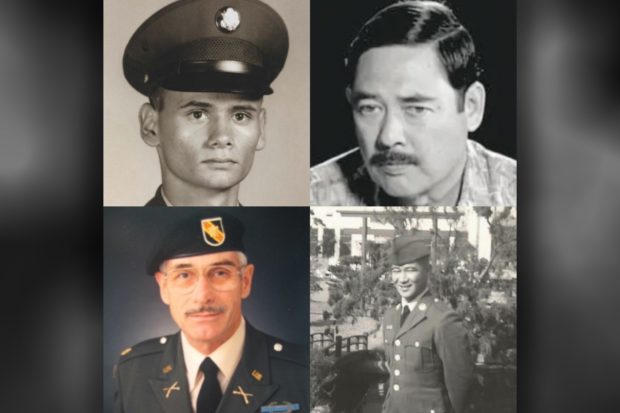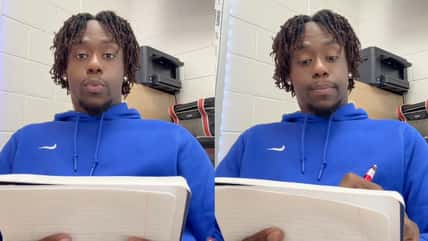Medals Of Honor Were Just Awarded To 4 Vietnam War Soldiers This Week, And Here Are Their Stories

On Tuesday, July 5, President Biden awarded the Medal of Honor to four Vietnam War Soldiers during a White House ceremony.
Their outstanding bravery and commitment defended countless ally lives, and here are their stories.
Staff Sergeant Edward Kaneshiro
First was Staff Sergeant Edward Kaneshiro, who received the medal posthumously. Kaneshiro was serving near a Kim Son Valley village in 1966 when, on December 1, two U.S. squadrons were ambushed.
According to the U.S. Army, “enemy forces had killed his platoon leader and several other Soldiers, and had his two sister squads pinned down.”
Kaneshiro analyzed the situation and realized that enemy forces were attacking from a machine-gun bunker and a massive concealed trench. Instead of taking his men with him, though, Kaneshiro sent them to take cover and trekked on by himself.
He managed to eliminate the bunker threat by expertly throwing a grenade. Afterward, “he leaped into the trench and single-handedly worked his way down its entire thirty-five-meter length, destroying one group of enemies with his rifle and two more enemy groups with grenades.”
Kaneshiro’s bravery is what allowed his squadron to survive and prepare to evacuate the victims of the attack.

U.S. Army; pictured above are the men who were awarded this week
Sign up for Chip Chick’s newsletter and get stories like this delivered to your inbox.
Specialist 5 Dwight Birdwell
On January 31, 1969, Specialist 5 Dwight Birdwell watched as a massive North Vietnamese force attacked his unit at the Tan Son Nhut Air Base.
During the fire, most of Birdwell’s unit vehicles were destroyed. Moreover, his tank commander became incapacitated.
Birdwell jumped into action and moved his commander to safety. Then, he took over the command position and began firing upon the enemy.
He eventually ran out of ammunition and quickly repositioned himself in a squadron commander’s helicopter.
It had been taken down by enemy fire, but Birdwell was able to retrieve two machine guns and ammunition.
He and another unit member were able to suppress the North Vietnamese forces using the devices until Birdwell’s machine gun was struck by enemy fire. It exploded, leaving Birdwell’s face and torso severely injured.
Nonetheless, he refused to evacuate. While injured and still under fire, “Birdwell led a small group of defenders past the enemy force and engaged the enemy with hand grenades– disrupting their assault until reinforcements arrived.”
He only finally received treatment after being ordered to seek medical attention.
Specialist 5 Dennis Fuji
Specialist 5 Dennis Fuji was a crew chief who aided rescue operations to transport injured South Vietnamese personnel on February 18, 1971. While doing so, Fuji’s helicopter was attacked by the enemy and crashed. Fuji was also injured.
A second ally helicopter did land and pick up the downed airmen. But, Fuji was being directly targeted by enemy fire.
So, instead of boarding the second helicopter and endangering more lives, he decided to remain in the combat area alone.
“Fuji secured a radio and informed the aviators in the area that the landing zone was too hot for further evacuation attempts. Fuji remained as the lone American on the ground, treating the injuries of South Vietnam troops throughout the night and the next day,” the U.S. Army stated.
The next evening, Fuji’s perimeter also came under severe assault. He continued to put his safety in danger in order to ascertain enemy positions and direct the necessary air strikes. Because of Fuji’s selflessness, the South Vietnamese troops were successfully defended.
Major John Duffy
On April 14, 1972, Major Duffy was the South Vietnamese 11th Airborne Battalion’s senior advisor. Just days before, the command post was destroyed by enemy forces, and the 11th’s commander had perished. Duffy, too, was injured twice.
Rather than evacuating, though, Duffy spearheaded a two-day defense. And, like Fuji, Duffy jeopardized his own position in order to call in air strikes against the enemy.
Afterward, he also ensured that all wounded troops were moved to safety, provided the remaining standing troops with ammunition, and led the injured to an evacuation area while still being pursued by enemy lines.
More About:Human Interest





